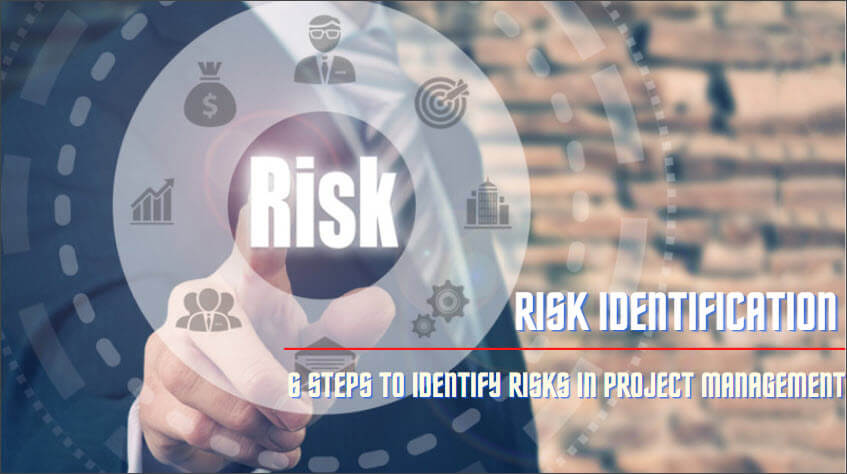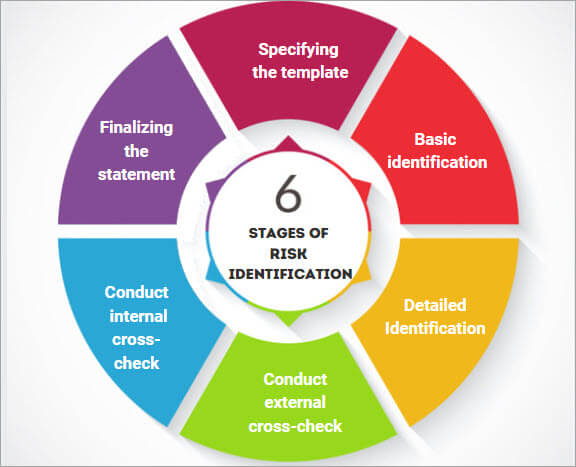
Jump ahead to
Risk Identification
The typical process of identifying risks starts with the process of identification, analysis, monitor and control. However, professionals often face difficulty in choosing the best-suited techniques for identifying risks. In addition, the risk identification process varies according to the organization and its size. For example, organizations that work on simple projects don’t need elaborate procedures to identify risk. Likewise, small organizations often do not have the resources to carry out extensive risk identification processes. As a result, risk managers are often in a dilemma on how to carry out the process of risk identification.
What is risk identification?
Risk identification refers to the process of identifying risks that arise in project management. it is observed that several businesses modify the risk identification framework as per their convenience. A few methods of identifying risks include brainstorming, Delphi technique, SWOT analysis, checklist analysis, flowchart method, and so on. Prior to choosing the method of risk identification, it is important for risk management professionals to follow a step-by-step process to identify and assess the risk. Let us have a detailed view of the risk identification process.
6 stages of risk identification:

Specifying the template
The template acts as a statement for risks, specifying the causes, effects, impacts, area of risk, and impacts. Describing the risk statement in this manner helps risk management professionals to understand it better. Each risk needs to be explained in detail, thereby assisting the project team to create an effective risk management plan. It is important to note that risks can bear a negative as well as a positive impact on the project. Positive risks are often considered as opportunities to improve the performance of the project. On the other hand, negative risks are often considered as potential threats for smooth flow of a project.
Basic identification
On choosing the template, risk management professionals can take up the first step up of identifying risks. Often a risk management professional is necessitated to answer the basic questions as to why or why not us, and where has the risk arrived before. The answer to the first question is often a SWOT analysis, while the answer to the latter question reflects on the previous experiences. Risk managers compare the present risk to the situation when the risk had previously occurred in the past. This further assists in determining the effects of the risk easily.
Detailed Identification
This stage of risk identification focuses on following an extensive process for identifying the risk. Although this stage is time-consuming, it assists risk managers to assess the depth of the risk. Several businesses use 5 major techniques to identify risk. They are:
- Brainstorming
- Interviewing
- Review of project-related documents
- Delphi technique
- Checklist analysis
Conduct external cross-check
The third step is to externally cross-check the list of risks acquired through the risk identification methods. Risk management professionals are required to evaluate the risks identified and determine the impact. Creating a risk checklist assists in understanding the typical risks that may arise out of projects and the extent of the impact. The second method of cross-checking the risk is through categories. Often each kind of project can be associated with a set of risks. These risks can be further classified into technical, operations, marketplace, and so on.
Conduct internal cross-check
On obtaining the list of risks, it is important to associate the list with the defined scope of the project. This helps to determine when and how the risks might occur during the course of the project. Risk managers often use Work Break Down (WBS) structure to carry out this process. In this stage, each risk is checked with the corresponding WBS element. In addition, every WBS element is scanned to check whether it has been considered for risk identification.
Finalizing the statement
The last step of the risk identification process is to draw a final risk statement. As discussed earlier in drawing a risk statement is one of the prominent steps to be taken by risk managers. With the information obtained through each stage, risk management professionals can fill the elements specified in the template for each risk. Various techniques such as flowcharting, and influence diagrams are available to fill the missing elements of the statement.
Conclusion:
This process of risk identification can be customized according to the needs of the organization. Risk management professionals need to carefully indulge in the process of carrying out only the necessary steps. This helps to speed up the process of risk identification, assess and prevent its occurrence.
Individuals who want to broaden their knowledge on risk identification and risk management can pursue the PMI-RMP Certification. The RMP certification is globally recognized and offered by PMI. Professionals owning the certification master the techniques and procedures involved in identifying risks through PMI RMP Training sessions. Furthermore, the certification validates the sophisticated skillset of professionals in risk management.



